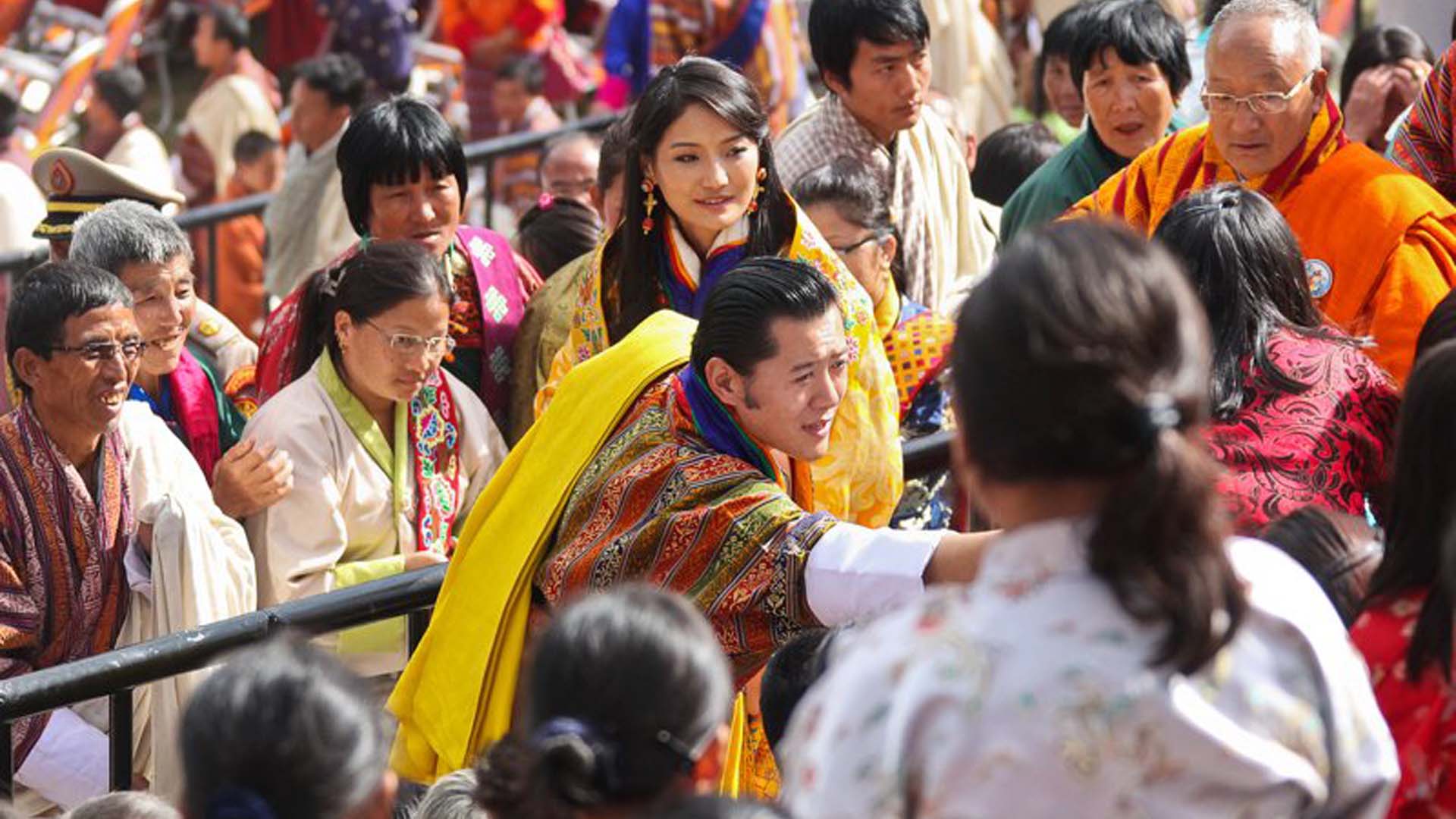Monarchy and Democracy in Bhutan
The Dual form of government introduced by Zhagdrung Ngawang Namgyal ended with the establishment of the Hereditary Monarchy in the year 1907.
Gyalpo Ugyen Wangchuck
Sir Ugyen Wangchuck was elected as the first Hereditary Monarch of Bhutan in December 17, 1907. Ugyen Wangchuck was the son of the Trongsa Penlop, Jigme Namgyal. He died in 1926 and ruled for 19 years as the King of Bhutan. He was a wise diplomat and an able administrator. During his reign, he introduced the system of western education and made several reforms in the system of government. He also signed a new treaty with the British in India in 1910. He was married to Ashi Tsendue Lhamo.
Druk Gyalpo Jigme Wangchuck
King Jigme Wangchuck was the second Hereditary King of Bhutan. He succeeded his father in the year 1926. He was born in 1905 and was the eldest son of King Ugyen Wangchuck. During his reign, Bhutan started to show itself to the outside world with the participation in the Asian Relations Conference in New Delhi in the year 1947. In the year 1947, the Treaty of perpetual peace and friendship between the government of Independent India and Bhutan was signed in Darjeeling. This treaty governs the modern day Indo-Bhutan relations.
Druk Gyalpo Jigme Dorji Wangchuck
The Third King Jigme Dorji Wangchuck, also known as the Father of Modern Bhutan was born in 1928. He was enthroned as The King of Bhutan in the year 1952 and ruled till 1972. He was a very far sighted Monarch and Bhutan emerged as a modern nation during his reign. He banned slavery and serfdom and distributed land to the landless. He established a high court and reformed the judicial system of Bhutan. He also started the National Assembly in 1953 and started the five year planned economic development in 1961. Bhutan joined the United Nations and many other international organizations. Most of the modern developments were started during his reign leading Bhutan to its today’s state.
Druk Gyalpo King Jigme Singye Wangchuck
His Majesty, the King Jigme Singye Wangchuck was born to King Jigme Dorji wangchuck and Queen Ashi Kelzang Chhoden Wangchuck on 11th November 1955. He became the youngest Monarch on 23 July 1972 at a very young age of 17. The official coronation was held on June 02, 1974. His Majesty King Jime Singye Wangchuck married four sisters – Ashi Dorji Wangmo Wangchuck, Ashi Tshering Pem Wangchuck, Ashi Tshering Yangdon Wangchuck and Ashi Sangay Choden Wangchuck as queens in the year 1979. The official Royal wedding was held in 1988. Under his reign Bhutan developed foreign relations with many more countries and joined many other international organizations. He decentralized the governing system and made many other reforms.
Druk Gyalpo Jigme Khesar Namgyal Wangchuck
On the National day of 2007, His Majesty King Jigme Khesar Namgyal Wangchuck was enthroned the fifth hereditary King of Bhutan and Bhutan. The public ceremony was held on 1 November 2008 marking the 100 years of Hereditary Monarchy in Bhutan. His Majesty King Jigme Khesar Namgyal Wangchuck was born on 21st February 1980. After completion of his studies in Bhutan, his majesty studies abroad at Philips Academy, Cushing Academy and Wheaton College in United States. As a crown Prince his Majesty officially represented Bhutan on several international events. His Majesty attended the Thai King Bhumibol Adulyadej’s 60th Anniversary celebrations in Thailand in the year 2006 which gave rise to rise to a legion of female fans in Thailand. On 31 October 2004, Khesar was installed as the Trongsa Penlop in Trongsa Dzong which is the formal declaration of this status as the Crown Prince. The King announced his engagement to Ashi Jetsun Pema in 2011 and married on 13 October 2011. His Majesty the fifth King brought many reforms and Changes in diplomacy, land reforms and kidu. His Majesty also initiated the military-style training for volunteers known as the DeSuung Training Programme in 2011, on the request of the youth which is aimed to equip volunteers with the skill to provide assistance during emergencies, and has been hugely successful. There are over 1000 such volunteers as of now.
Democracy in Bhutan
Today Bhutan has changed from an absolute Monarchy to a multi-party democratic constitutional monarchy and had its first Poll day in the year 2008. The first ruling party was the Druk Puensum Tshokpa (DPT). After its successful reign of five years, the second ruling party is the People’s Democratic Party (PDP). The current Prime Minister is Lyonpo Tshering Tobgay.

